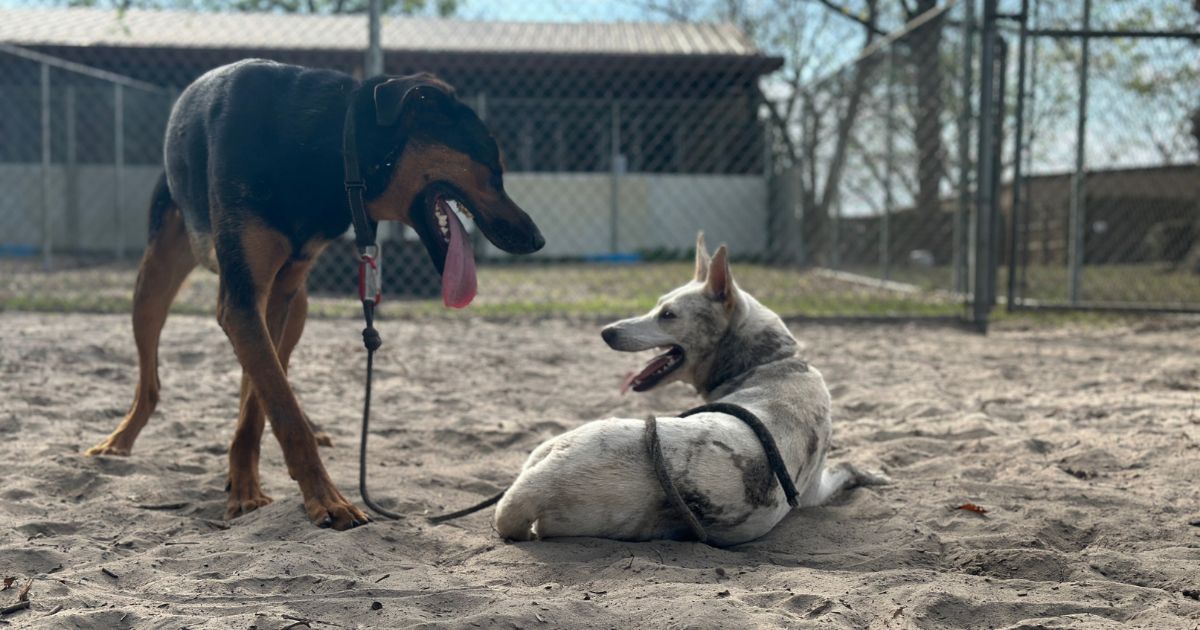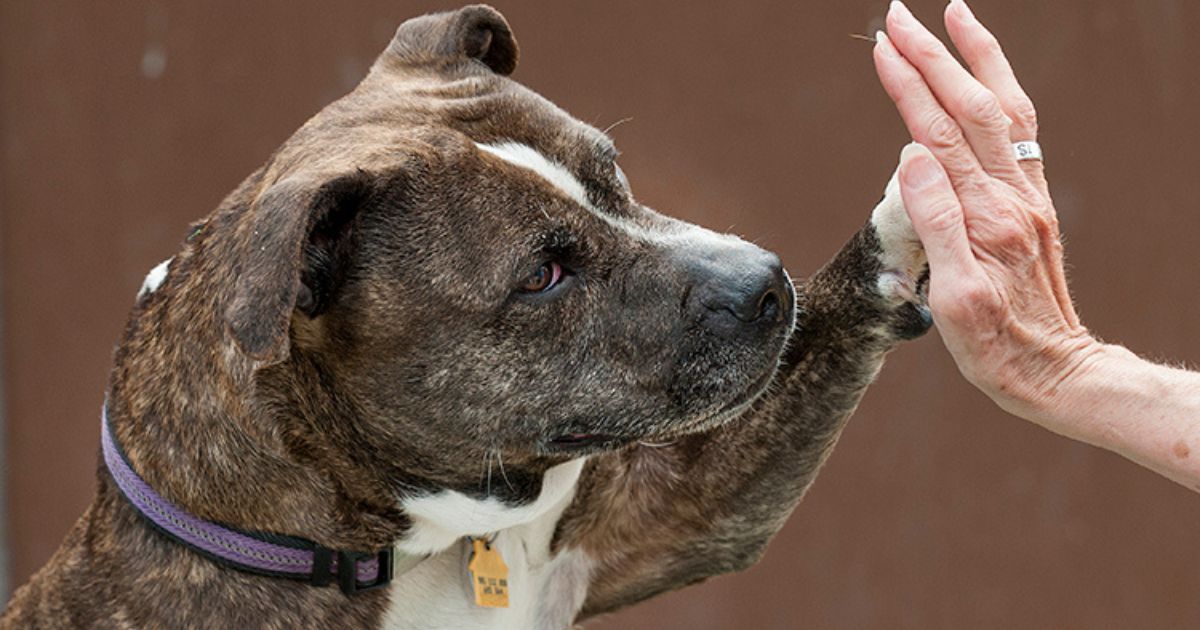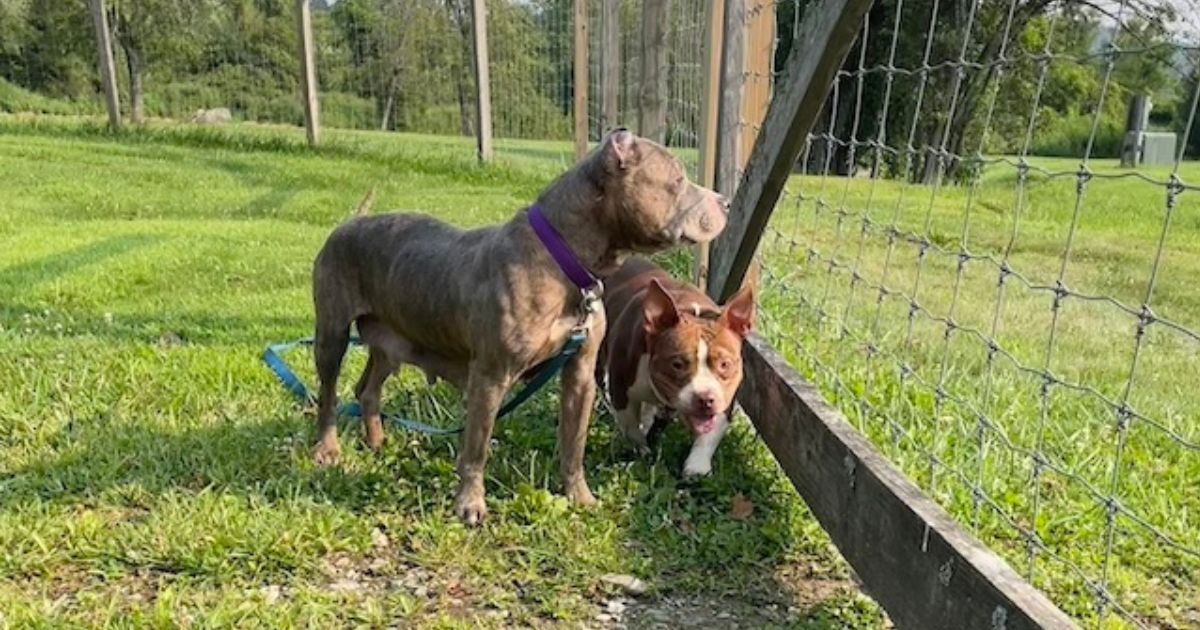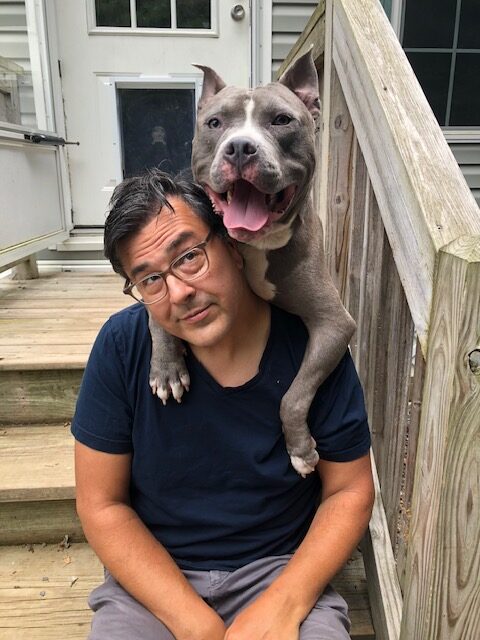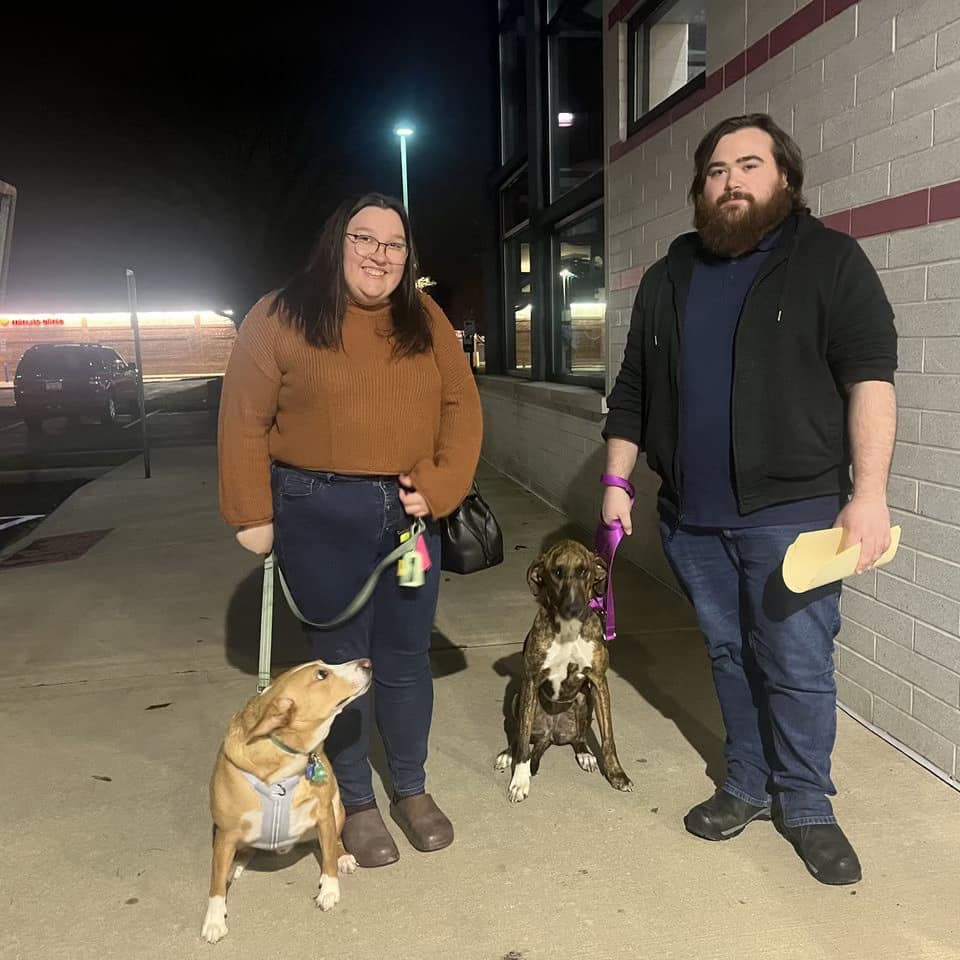
Bianca had spent 326 days waiting to be chosen at her first shelter. When she arrived at her second shelter, something magical happened. This sweet girl, who hadn’t received a single adoption inquiry during nearly a full year of waiting, was adopted within just hours of arriving at her new location.
Her story isn’t unique in the Dogs Playing for Life (DPFL) Triple E program; it’s the kind of magic this innovative program creates every day.
It’s what happens when we recognize that sometimes the best thing we can do for a dog isn’t to change them—it’s to change their circumstances.
The Challenge: Time & Space
In shelters across the country, dogs are spending longer in care than ever before. As Shelter Animals Count executive director Stephanie Filer has noted, “dogs are now waiting nearly twice as long to get adopted than they were prior to the pandemic.” Shelter Animals Count’s 2025 mid-year report shows this trend is continuing, with fewer large and medium dogs being adopted so far this year.
The longer a dog stays in a kennel environment, the more their well-being declines, and the harder it becomes for potential adopters to see their true personality. Research has found that dogs living in shelters long-term showed more stress-related behaviors and had more difficulties relaxing in the shelter environment. Many wonderful dogs find themselves waiting not because of behavioral challenges, but simply due to circumstances beyond their control: high intake numbers, limited local adoption demand, or being in communities where their particular qualities don’t match what local adopters are seeking.
The National Canine Research Council reminds us that “there is simply nothing different about dogs who live in a shelter from dogs who have a cozy couch. They are just dogs who are living in a shelter environment while they are between homes.” If it’s not the dogs themselves, then we need to look at all the other factors at play: from community adoption patterns to available resources to simple geography. As the saying goes, sometimes it’s all about “location, location, location.”
The Solution: Strategic Placement
Enter DPFL’s Triple E (Every Dog, Every Day, Every Where!) program. This innovative approach recognizes that sometimes the best solution for a dog isn’t changing the dog—it’s changing their circumstances. Dogs who have been waiting in high-intake shelters get a fresh start through strategic placement.
The Triple E program highlights something we’ve long known but don’t always act on: where a dog is located can make all the difference in their adoption prospects. A dog who seems overlooked in one community may be exactly what another community is looking for. This isn’t about moving problems around. Instead, it’s about recognizing that different communities have different adoption patterns, different marketing reach, and different volunteer networks. What doesn’t work in one place might be exactly right for another.
Here’s how it works: Dogs are transferred from overwhelmed shelters to Dogs Playing for Life’s Canine Center Florida (CCF), where they spend approximately two weeks building essential life skills like polite kennel routines and confident leash walking. Then they’re transported to carefully selected placement partner shelters in communities where their chances for adoption are significantly higher. Think of it as a reset button for dogs whose only barrier to adoption is being in the wrong place at the wrong time.
What makes Triple E different from simple transport is the intentional preparation phase.
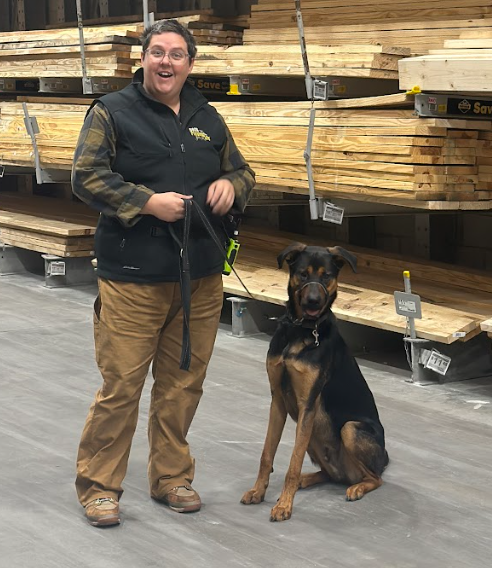
At the Canine Center, dogs receive what Dogs Playing for Life calls “essential skills for a life fulfilled”: daily playgroups, extended time outside their kennels for enrichment and training, and customized approaches that help each individual dog thrive. The training focuses on practical skills that help dogs present their best selves: confident leash walking, polite kennel behavior, and positive social interactions.
This isn’t about “fixing” dogs who were broken; it’s about helping them show their authentic personalities in new environments while building their confidence and helping them shine.
Proof of Impact: Numbers & Stories
The numbers speak volumes about the power of strategic placement: Dogs in the Triple E program spent an average of 107 days at their first shelters before joining the program. Those same dogs were adopted after an average of just 19 days at their new partner shelters. That’s an 82% reduction in wait time.
And the success stories just keep coming: 155 unique dogs have participated in the program since it began, with 98 successful adoptions and counting. 109 dogs moved to placement partner shelters where they found new opportunities, and 7 additional dogs were adopted directly from Canine Center Florida after increased local visibility.
But it’s so much more than just numbers. Take Icarus, for example. He spent 397 days at his first shelter with no adoption interest. After just 9 days at his new shelter, he found his perfect match: a family that includes a long-haul truck driver who now takes Icarus along on most of his routes
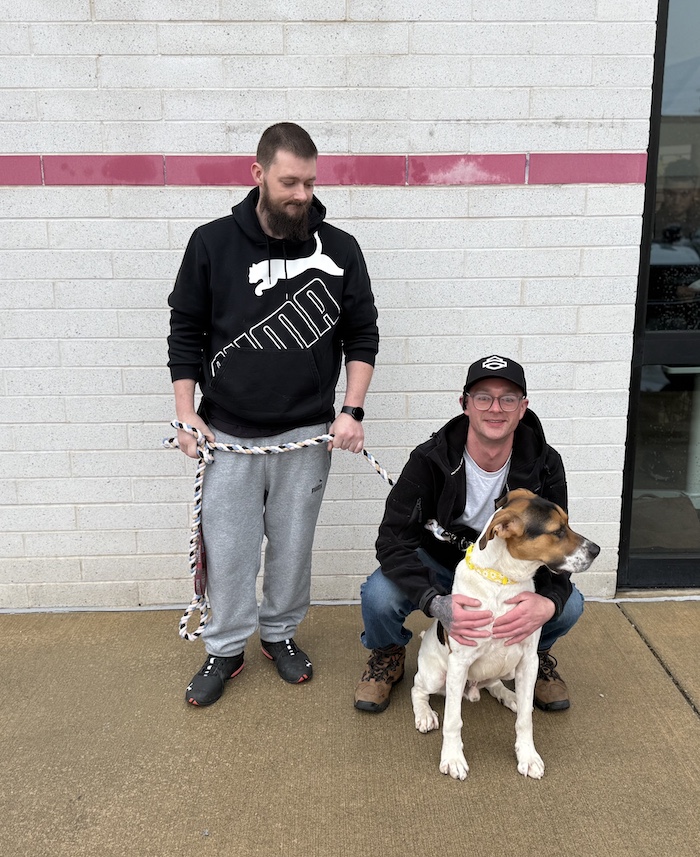
Another CCF dog, Apollo, had spent 271 days waiting before joining Triple E and was adopted after just 3 days at his new shelter.
The difference? Sometimes it really is just about being in the right place.
What this means for Animal Wellbeing
With the potential to serve over 1,000 dogs annually at full capacity, the Triple E program represents the kind of innovative thinking our field needs. As Dogs Playing for Life founder Aimee Sadler puts it: “Our programs stress the consideration of the whole dog – physically, emotionally, and behaviorally. We treat all animals as individuals.”
Animal Farm Foundation is proud to support the Triple E program as part of our commitment to advancing effective, data-driven approaches to animal wellbeing. This program embodies many of the principles we advocate for:
- Individual-focused approaches that look at each dog as an individual with unique needs and potential
- Positive marketing that helps dogs present their best selves to potential adopters—much like the positive marketing approaches we encourage all shelters to adopt
- Data-driven decision making that tracks meaningful metrics and adjusts based on outcomes
- Community-centered solutions that recognize different communities have different strengths and needs
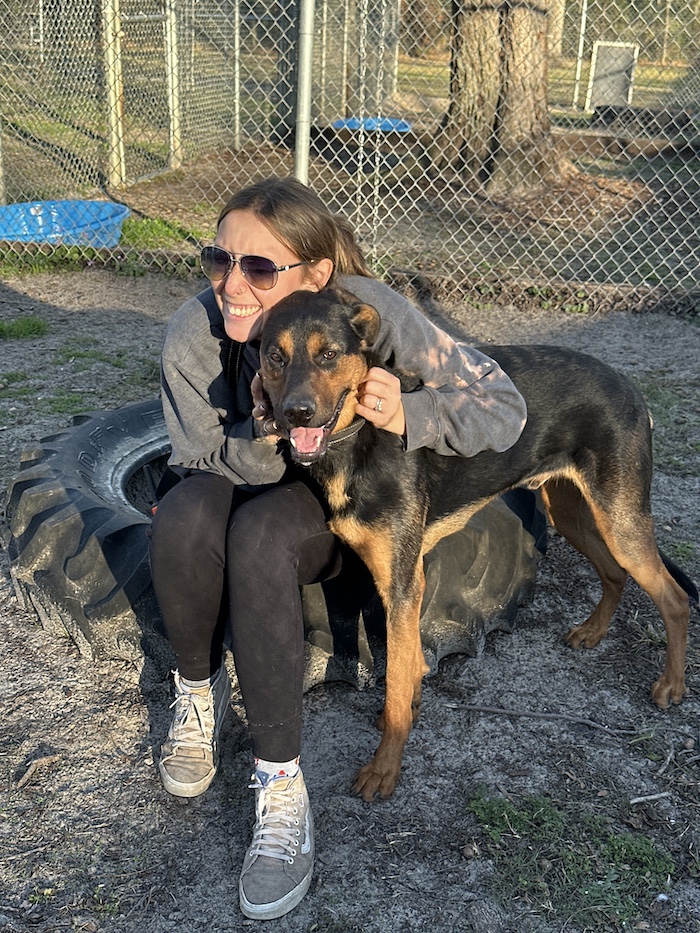
Every dog in the Triple E program represents more than just a successful placement. They represent a shift in how we think about “adoptability,” about the role of environment in shelter outcomes, and about the power of giving dogs fresh starts in new communities. Bianca, Icarus, Apollo, and the more than 115 other Triple E graduates remind us that sometimes the only thing standing between a dog and their home is the right opportunity in the right place. The Triple E program proves that with strategic thinking, strong partnerships, and a commitment to individual dogs, we can create systems that work for dogs, for shelters, and for communities.
Because every dog deserves every chance, every day, everywhere.
Want to become a triple E Placement Partner?
There are incredible benefits to joining the Triple E (Every Dog, Every Day, Every Where!) network. Placement partners receive priority access to enrichment-trained, adoption-ready dogs, with transportation covered by Dogs Playing for Life. They also gain access to exclusive learning opportunities, including webinars, mentorships, and expert guidance, to help support continued success. In addition to ongoing support from the DPFL team, partners are recognized as leaders in innovative, lifesaving work. Most importantly, being part of this program means playing a vital role in reducing pressure on overcrowded shelters and giving long-stay dogs a fresh start in communities where they can truly shine. The rewards are real, and so is the impact. Reach out to erin@dpfl.org for more information.

